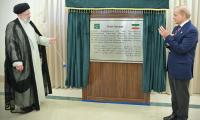ISLAMABAD: Poverty has declined significantly in Punjab in the last 20 years as it reduced from 61.8 percent population living below the poverty line in 1998-99 to 16.3 percent in 2018-19.
Balochistan was on top among the provinces with 40 percent population in clutches of poverty in 2018-19 but 20 years back in 1998-99, KP used to assume the top position for having 71 percent population into the poverty trap.
This provincial poverty estimates have been calculated by economists of Pakistan Institute of Development Economics (PIDE), an affiliate research and degree awarding institution of the Planning Commission of Pakistan. Its poverty analysis shows that Balochistan was at the bottom of poverty in 1998-99 among the four federating units where 55.9 percent population was living below the poverty line.
The poverty at the national level stood at 61.6 percent in 1998-99 whereas in Punjab it stood at 61.8 percent, Sindh 57 percent, KP 71 percent and Balochistan 55.9 percent.
Later in 2018-19, the poverty at the national level stands at 21.5 percent where in Punjab it is estimated to be standing at 16.3 percent, Sindh 24.6 percent, KP 27 percent and Balochistan 40.7 percent.
The PIDE in its knowledge brief stated that the provincial estimates somehow give a clear picture of poverty across Pakistan at the regional level.
In 1998-99, poverty was observed to be the highest in the province of KPK at 71 percent and lowest in Balochistan at 55.9 percent but this trend was reversed in 2018-19 as the lowest percentage of poverty, which is 16.3 percent, was recorded in the province of Punjab and the highest in Balochistan at 40.7 percent.
Many factors contribute towards such an alarmingly high figure of poverty in Balochistan of which major could be high levels of income inequality and low employment opportunities.
The headcount index measures the proportion of the population that is poor, but it does not indicate how poor the poor are. Therefore, the poverty situation defined through different poverty slabs has very serious policy implications as grouping people into different poverty slabs helps in targeted policy initiatives for these groups. The five different levels of the poor defined for this research are Ultra poor people which are 50 percent below the poverty line, Poor-which are between 50 percent to 75 percent of the poverty line, Vulnerable poor group which are between 100 and 125 percent of the poverty line, Quasi poor- people which are greater than 125 percent and less than 200 percent of the poverty line and finally Non-Poor which are people above 200 percent of the poverty line. The graph shows that the percentage of ultra-poor has decreased significantly starting from 27 percent in 2005-06 to 5.5 percent in 2018-19. It is a good sign that extremely poor people have decreased over time. Those defined as the vulnerable poor show a mixed trend with the highest percentage at 22.1 percent in 2010-11 and lowest at 14.3 percent in 2001-02. Similarly, it has been observed for the non-poor whose percentage has increased from 8.5 percent in 2005-06 to 21.4 percent in 2018-19, which means that non-poor people have almost more than doubled from 2005-06 till 2018-19.
The poverty rate in Pakistan has declined significantly from 1998 to 2019 and also by region urban and rural. The number of non-poor people has increased from 6.7 percent to 21.4 percent. It means that the overall poverty level has reduced, and more people have got access to basic facilities like food, health, education, and employment. So, from the above analysis, it was concluded that poverty levels have declined across Pakistan due to periods of high economic growth that translated into poverty reduction and successful implementation of traditional and modern programs for alleviating poverty. These programs include the social safety net programs including the Ehsaas Strategy BISP, WWF and Zakat.
It was suggested that the government must set some proper monitoring strategy, so that the poorest of the poor people should get benefits from the social safety net programs, which are acting as employment generation opportunities as it will help reduce the poverty levels significantly.
Hospital management responded that only one post of BS-19 was vacant which is to be filled through direct recruitment
PMLN does not have a mandate from the people for privatising the SOEs: says Rabbani
Administrative Service Ali Hussain Malik and made him OSD in the Establishment Division
Establishment Division had notified Rizvi’s appointment as IGP Islamabad on March 30, but the Punjab government...
A British citizen of Pakistani origin has lodged formal complaint against FIA officer, alleging torture during a...
Former COAS admitted the army extended full support to Imran Khan’s government







